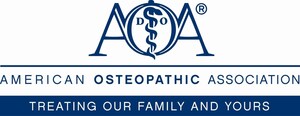Osteopathic Physicians Call for Better Education Among Teachers, Parents and Children About Potentially Fatal 'Choking Game'
CHICAGO, July 16, 2011 /PRNewswire-USNewswire/ -- Addressing what some teens consider a game that offers them a feeling of being high but can actually have grave consequences, members of the American Osteopathic Association's (AOA) House of Delegates emphasized today the need for better education for adults and children about the dangers of what is often referred to as the "choking game."
Also called the "fainting game," "blackout" or "flatliner," this risky behavior is described by medical experts as an activity in which a person acts alone or has others helping to limit the flow of oxygen to the brain to achieve a feeling of euphoria.
"Depriving the brain of oxygen can lead to loss of brain and neurological function, or suffocation resulting in permanent disability or death," says Marla Kushner, DO, an AOA board-certified adolescent family physician in private practice in Chicago. "We need to make sure that both adults and young people understand that what may seem like an innocent game to teens is extremely dangerous."
To prevent unnecessary harm to teens, delegates passed a policy calling for the inclusion of information about the dangers of the "choking game" in classroom education and other school-sponsored discussions about drugs and risky behaviors. They also supported increasing awareness among parents, counselors and physicians of the dangers and warning signs associated with the "choking game" and the resources available for educating youths.
About the House of Delegates
The AOA's House of Delegates, comprised of more than 500 delegates representing osteopathic state medical associations, specialty societies, interns, residents and students from throughout the country, meets annually in July to set organizational policies and elect new officers.
About the American Osteopathic Association
The American Osteopathic Association (AOA) proudly represents its professional family of more than 78,000 osteopathic physicians (DOs); promotes public health; encourages scientific research; serves as the primary certifying body for DOs; is the accrediting agency for osteopathic medical schools; and has federal authority to accredit hospitals and other health care facilities. More information on DOs/osteopathic medicine can be found at www.osteopathic.org.
SOURCE American Osteopathic Association
WANT YOUR COMPANY'S NEWS FEATURED ON PRNEWSWIRE.COM?
Newsrooms &
Influencers
Digital Media
Outlets
Journalists
Opted In






Share this article